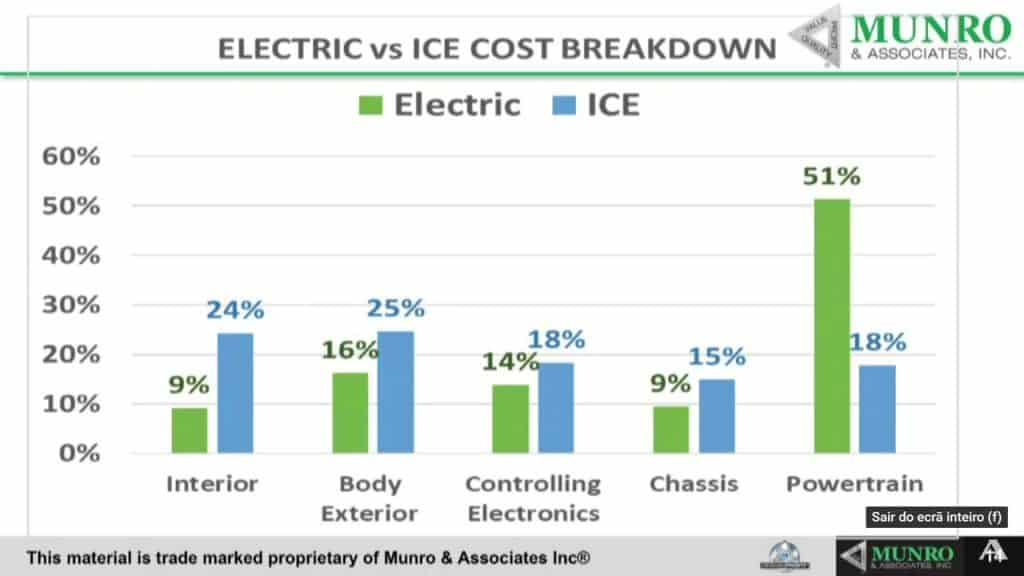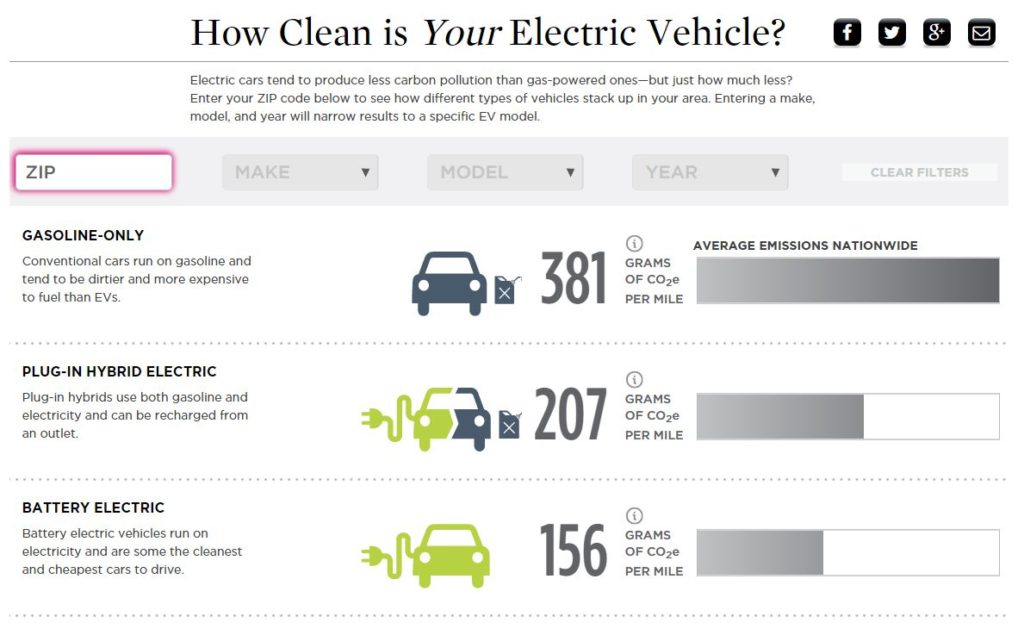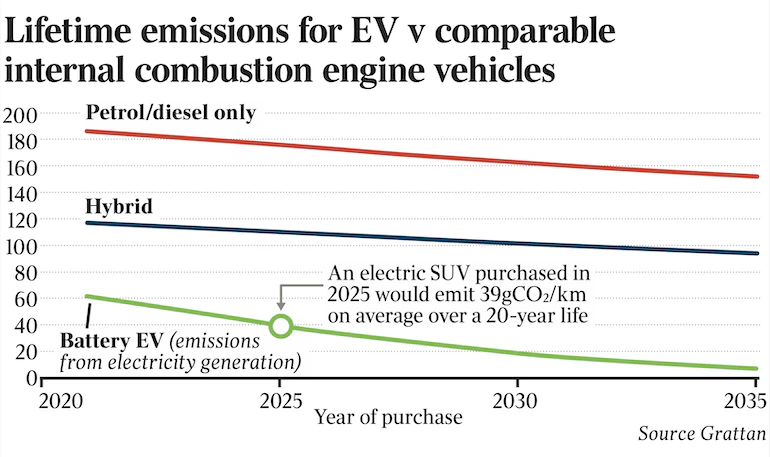Electric vehicles (EVs) are increasingly being seen as the future of transportation due to their numerous benefits over traditional internal combustion engine (ICE) vehicles. Many people consider switching to EVs for their environmental benefits, and to reduce their dependence on fossil fuels. In this article, we'll explore some of the factors affecting the decision between EVs and ICE vehicles, including their costs, efficiency, emissions, and driving range.
EV vs. ICE Cost Breakdown
One of the main considerations for most people when buying a car is the cost. While EVs tend to have a higher upfront cost than ICE vehicles, their cost of ownership can be significantly lower over time. This is due to the much lower cost of fuel and maintenance for EVs compared to ICE vehicles.

Average lifetime fuel costs for an ICE vehicle are around $22,000, compared to just $7,000 for an EV. Maintenance costs are also significantly lower for EVs due to their simpler design, with no oil changes or other extensive maintenance required. Overall, EVs can be a more cost-effective investment in the long run.
ICE vs. EV Efficiency
Another factor to consider when comparing EVs and ICE vehicles is their efficiency. EVs are much more efficient at converting energy into miles driven than ICE vehicles. While an ICE vehicle typically converts only around 20-30% of fuel energy into forward motion, EVs can convert up to 80% of the energy stored in their batteries into motion.

This means that EVs can travel further on the same amount of energy, making them more energy-efficient and cheaper to operate in the long run. For example, a mid-size EV can travel around 125 miles on a single charge, compared to just 25 miles on a gallon of gasoline for a mid-size ICE vehicle.
EV vs. ICE Driving Range
One concern that many people have about EVs is their driving range. While EV technology has improved significantly over the past few years, many EVs still have a shorter driving range than ICE vehicles. However, this is changing rapidly, and many new EV models are now capable of traveling more than 200 miles on a single charge.

In fact, most people drive less than 40 miles per day on average, which means that even older EV models with a range of 100-150 miles can meet their daily driving needs without needing to recharge. Additionally, a growing network of EV charging stations across the country is making it easier than ever to recharge an EV on the go.
EV vs. ICE Emissions
Perhaps the biggest advantage of EVs over ICE vehicles is their environmental impact. While ICE vehicles emit harmful pollutants and greenhouse gases every time they're driven, EVs produce no emissions at all when they run on electricity generated from clean sources such as wind or solar.

Even when powered by electricity generated from natural gas or coal, EVs still produce fewer emissions than ICE vehicles due to their high energy efficiency. In fact, studies have shown that even when considering the entire lifecycle of the vehicle from production to disposal, EVs produce significantly lower greenhouse gas emissions than ICE vehicles in most cases.
EVs vs. ICEs: Carbon Emissions
Carbon emissions are a major contributor to climate change, and reducing them is a priority for many countries around the world. One way to reduce carbon emissions in the transportation sector is to switch from ICE vehicles to EVs. EVs produce significantly fewer carbon emissions, both during operation and throughout their entire lifecycle.

EVs also offer the possibility of using renewable energy sources to charge their batteries, further reducing their carbon footprint. As renewable energy sources such as wind and solar become more widespread and affordable, the environmental benefits of EVs will only increase.
Electric Cars Are Our Future
As we've seen, EVs offer numerous benefits over traditional ICE vehicles in terms of cost, efficiency, driving range, and environmental impact. While there are still some barriers to widespread EV adoption, such as the need for more charging infrastructure and longer battery life, these challenges are being addressed rapidly.

Many experts believe that EVs are the future of transportation, and are predicting that EV sales will soon outnumber ICE vehicle sales in most countries around the world. By making the switch to an EV, you'll be doing your part to reduce your carbon footprint, save money on fuel and maintenance costs, and help create a cleaner, more sustainable world for future generations.
If you are looking for EVs vs ICEs: Carbon Emissions — elephant energy you've came to the right page. We have 8 Pictures about EVs vs ICEs: Carbon Emissions — elephant energy like What you need to know about Hybrid Vehicle Emissions - MyMoto Nigeria, EV vs. ICE Cost Breakdown and its Effects on EV Adoption - Munro and also EV vs combustion engine: which car has fewer lifetime emissions? | The. Read more:
EVs Vs ICEs: Carbon Emissions — Elephant Energy
 elephantenergy.us
elephantenergy.us emissions ices evs corolla
EV Vs. ICE Cost Breakdown And Its Effects On EV Adoption - Munro
 leandesign.com
leandesign.com breakdown total powertrain
EV Vs ICE Vehicles: Electric Cars Are Our Future And They're Greener
 www.youtube.com
www.youtube.com electric vs ev ice cars than future greener
ICE Vs EV Efficiency: How Much More Efficient Is An Electric Vehicle
 www.youtube.com
www.youtube.com combustion inefficient efficiency evs
What You Need To Know About Hybrid Vehicle Emissions - MyMoto Nigeria
 mymoto.com.ng
mymoto.com.ng emissions hybrid vehicle disadvantages mymoto emission
ICE Vs EV - The Cost Factor - Clean Mobility Shift
 cleanmobilityshift.com
cleanmobilityshift.com factor
EV Vs Combustion Engine: Which Car Has Fewer Lifetime Emissions? | The
 www.theaustralian.com.au
www.theaustralian.com.au EV Vs. ICE: How Far Can You Travel In Each State For $100? - Top Tech News
 toptech.news
toptech.news combustion
Ice vs ev efficiency: how much more efficient is an electric vehicle. Emissions hybrid vehicle disadvantages mymoto emission. Ev vs combustion engine: which car has fewer lifetime emissions?

0 Comments